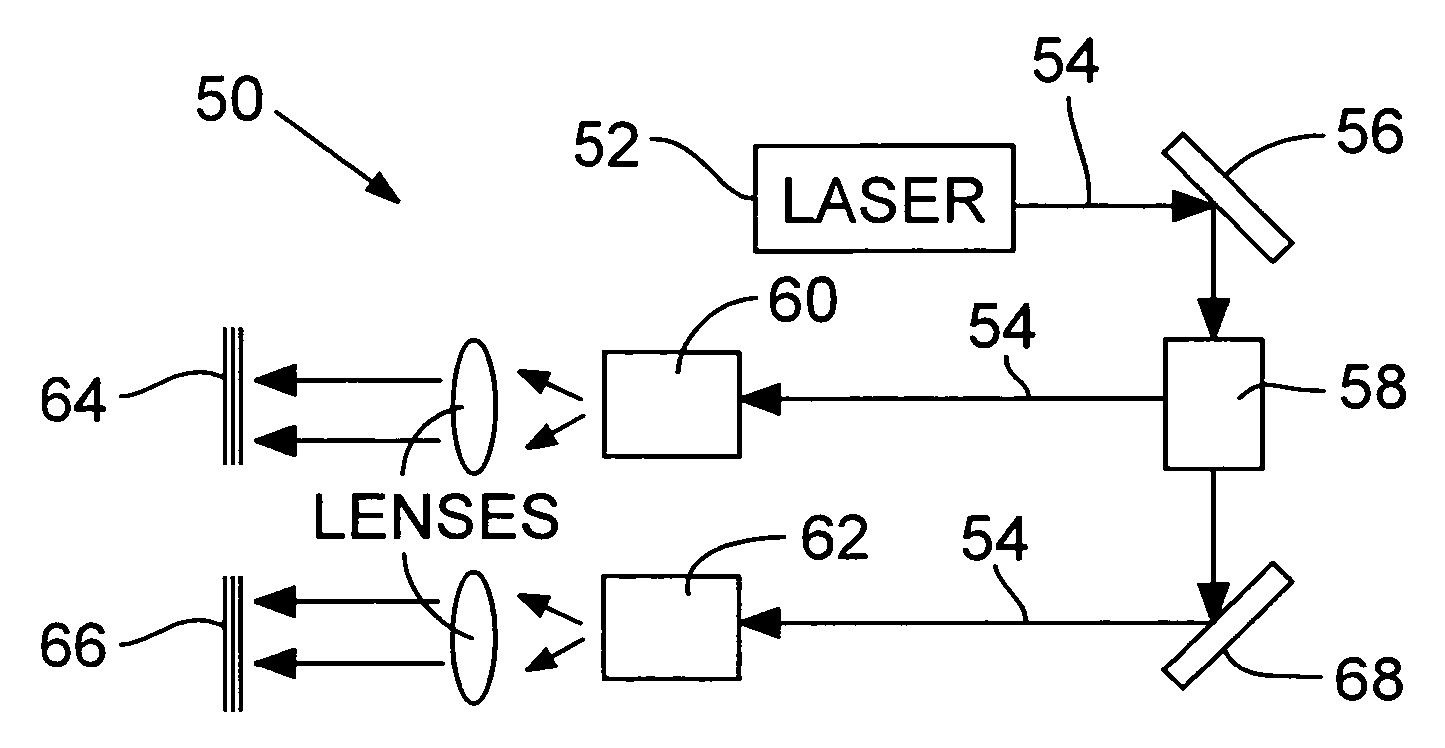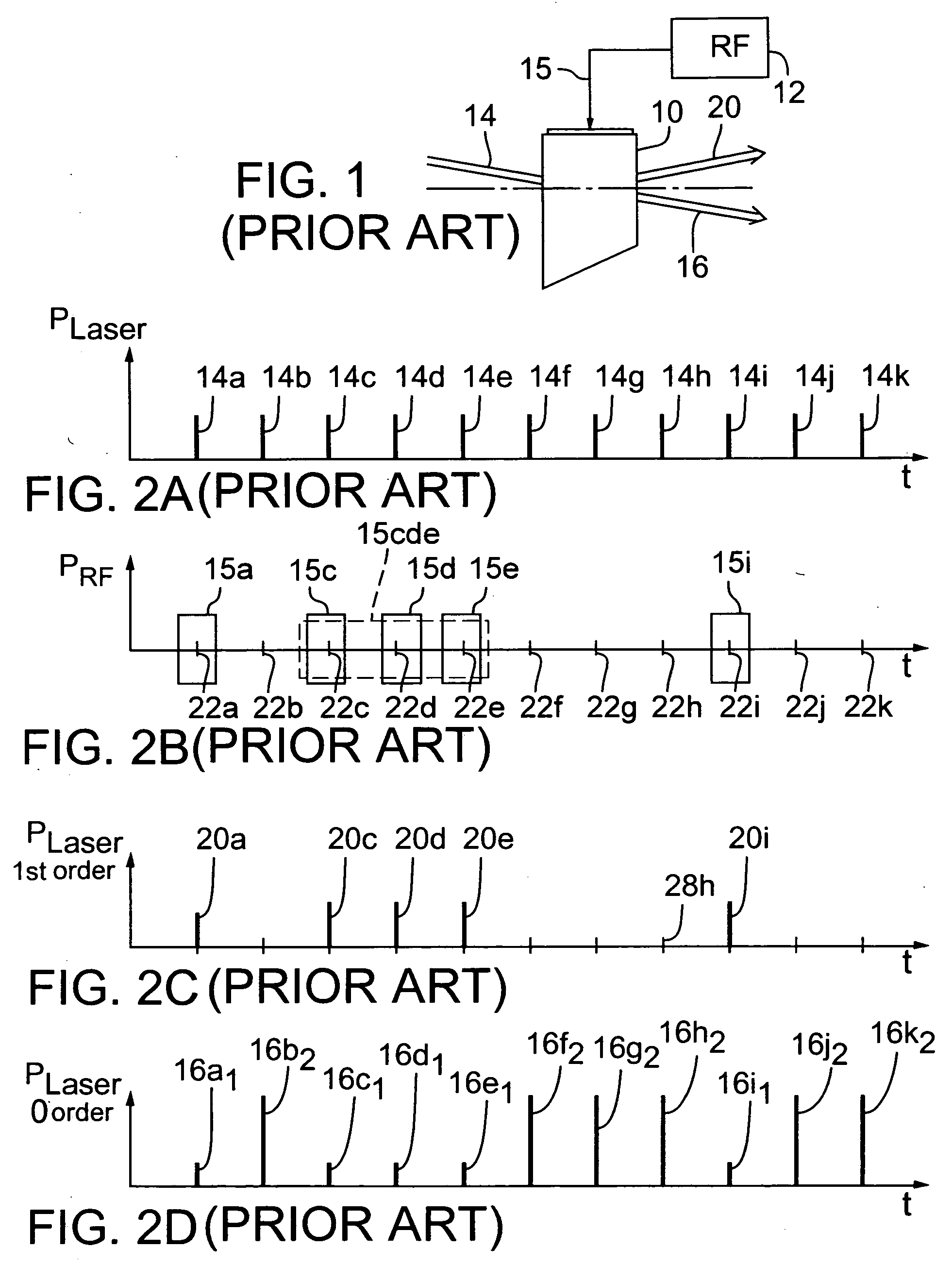Workpiece processing system using a common imaged optical assembly to shape the spatial distributions of light energy of multiple laser beams
a workpiece processing and laser beam technology, applied in the field of lasers, can solve the problems of inability to accurately shape the spatial distribution of light energy of multiple laser beams, inability to fully sever links, and inability to accurately shape the passivation structure or the silicon substrate, so as to eliminate thermal drift of laser output and reduce thermal loading variations in the aoms. , the effect of constant operation
- Summary
- Abstract
- Description
- Claims
- Application Information
AI Technical Summary
Benefits of technology
Problems solved by technology
Method used
Image
Examples
Embodiment Construction
[0039] Thermal loading variations in AOMs, such as prior art AOM 10, can be mitigated by employing pulse picking and laser power control methods shown with reference to FIGS. 3A-3C and 4A-4C, respectively. FIGS. 3A-3C (collectively, FIG. 3) show corresponding timing graphs of laser outputs 24a-24k (collectively, laser outputs 24), RF pulses 38a-38k (collectively, RF pulses 38) applied to prior art AOM 10, and working laser outputs 40a, 40c, 40d, 40e, and 40i (collectively, working laser outputs 40). In particular, FIG. 3A shows laser outputs 24a-24k that are emitted by a laser (not shown) at a constant repetition rate and separated by substantially identical laser output intervals 41. In typical embodiments, the laser output repetition rate may range from about 1 KHz up to about 500 KHz. Exemplary laser output repetition rates range from about 25 KHz to greater than about 100 KHz. For link processing embodiments, each of working laser outputs 40 preferably includes a single laser pu...
PUM
| Property | Measurement | Unit |
|---|---|---|
| wavelengths | aaaaa | aaaaa |
| energy wavelengths | aaaaa | aaaaa |
| time | aaaaa | aaaaa |
Abstract
Description
Claims
Application Information
 Login to View More
Login to View More - R&D
- Intellectual Property
- Life Sciences
- Materials
- Tech Scout
- Unparalleled Data Quality
- Higher Quality Content
- 60% Fewer Hallucinations
Browse by: Latest US Patents, China's latest patents, Technical Efficacy Thesaurus, Application Domain, Technology Topic, Popular Technical Reports.
© 2025 PatSnap. All rights reserved.Legal|Privacy policy|Modern Slavery Act Transparency Statement|Sitemap|About US| Contact US: help@patsnap.com



